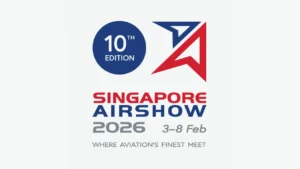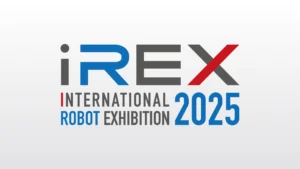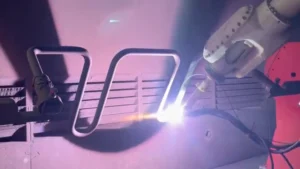table of contents
- Heading 1
- Heading 1
- Heading 1
- What Is Surface Finishing?
- Why Is There a Need for Surface Finish?
- 6 Common Surface Finishing Processes
- Challenges in Traditional Surface Finishing
- Advanced Surface Finishing Technologies
- Enhancing Surface Finishing with Augmentus Technology
- Industries Benefiting from Advanced Surface Finishing
- Future Trends in Surface Finishing
- Conclusion
- FAQs
share this
Surface finishing is critical to a product’s performance, appeal, and sales. Whether you’re producing consumer electronics or industrial machinery, the finishing process in manufacturing can make all the difference.
Over 80% of product recalls in the automotive industry are due to surface defects. This shows the importance of effective surface finishing processes in ensuring durability, aesthetics, and overall performance. In this article, let’s explore everything you need to get started with surface finishing.
What Is Surface Finishing?
Surface finishing is the process of altering the surface of a material to achieve a desired texture, appearance, or performance characteristic. This could involve smoothening, adding protective coatings, or creating specific patterns.
The purpose of surface finishing is to enhance the material’s resistance to wear, corrosion, and other environmental factors, while also improving its aesthetic appeal. Sanding, grinding, and coating are some of the commonly used surface finishing techniques. These ensure that the final product meets stringent quality and performance standards.
Why Is There a Need for Surface Finish?
Surface finishing is not just about making a product look good; it’s an essential process that impacts a product’s overall performance and durability. Whether you’re manufacturing parts for aerospace, automotive, or consumer electronics, the quality of the surface finish can be the difference between a product that lasts and one that fails prematurely. Here are five key reasons why the finishing process in manufacturing is necessary:
1. Improving Durability
Surface finishing processes such as coating and anodizing protect materials from corrosion, wear, and environmental damage. This significantly extends the lifespan of products.
2. Improving Aesthetic Appeal
Polishing and texturing can enhance the visual appeal of a product by creating a smooth, shiny, or textured surface. Consumers are more likely to be impressed by something more attractive to them.
3. Increasing Performance
By refining a surface’s characteristics, surface finishing can improve the functionality of parts. For example, it can reduce the friction in moving components, which can be crucial in certain applications.
4. Facilitating Assembly
Smooth and precise surfaces are crucial in ensuring that parts fit together correctly, reducing the risk of assembly errors and improving overall product quality.
5. Compliance with Industry Standards
Surface finishing is often required to meet industry-specific standards. By doing this, you can make sure that products are safe, reliable, and fit for their intended use.
6 Common Surface Finishing Processes
Types of surface finishes for metal include various techniques. Whether the goal is to enhance a product’s aesthetics, protect it against corrosion, or prepare a surface for further treatment, the right finishing process can make a difference. Here’s a detailed look at six key surface finish types and surface finish examples that are vital across various industries:
1. Sanding
The purpose of sanding is to smooth or shape materials by removing small amounts of material. It is done by using abrasive materials such as sandpaper, sanding belts, or abrasive discs. These abrasives gradually uniforms uneven surface and makes it aesthetic, free from defect, and functional.
In industries such as woodworking, metalworking, and automotive manufacturing, sanding prepares surfaces for subsequent treatments such as painting, coating, and sealing. The process can be done manually for small or intricate parts or automated using sanding machines for large-scale production. Automated sanding systems give precise control over speed, pressure, and movement for consistent results, especially for parts with complex profiles or large surface areas.
In industrial settings especially for parts with complex profiles, sanding is often automated using robotic systems to improve consistency and efficiency. Sanding is versatile and can be applied to a wide variety of materials, including wood, metal, plastics, and composites.
2. Grinding
Grinding is used to remove material from a workpiece to achieve a precise dimension or surface texture. This process involves the use of grinding wheels or belts (for narrow surfaces), which consist of abrasive particles bonded together. The grinding wheel rotates at high speed, cutting away small chips of material to create a smooth, flat surface.
This surface finish type is widely used in the manufacturing of components that require close tolerances and high surface quality, such as in the aerospace, automotive, and tool-making industries. Grinding is also used to remove impurities from surfaces for subsequent welding or joining processes. It is particularly effective type of surface finish for metals and ceramics. The process can be controlled to achieve different levels of surface roughness, depending on the needs of the final product.
Advanced grinding techniques often involve computer numerical control (CNC) machines that allow for precise control over the grinding process. These machines can be programmed to grind complex shapes and geometries with high accuracy.
3. Blasting
Blasting involves the use of high-pressure streams of abrasive materials to clean or texture a surface. Common blasting materials include sand, glass beads, and steel grit. One of these materials is chosen based on the desired finish. The process can remove surface contaminants, prepare a surface for welding, painting or coating, and create a smooth/textured finish for conjoining materials or to improve adhesion.
This surface finishing process is commonly used in industries like automotive, construction, and metal fabrication. For example, in the automotive industry, blasting is a surface finish example used to clean and prepare metal surfaces before applying paint. This is done so that the surface adheres strongly to the paint and has a smooth finish. In construction, blasting is used to clean and roughen concrete surfaces to improve the bonding of sealants or coatings.
Blasting can be carried out using various methods, including sand blasting, wheel blasting, and wet blasting. Each method has its advantages depending on the material and the desired outcome. Automation in blasting processes has become increasingly common as it brings more safety in surface treatment. Manual blasting is extremely dangerous. Large-scale manufacturing operations benefit highly from this as there is little to no room for errors.
4. Deburring
Deburring is the process of removing small imperfections, such as burrs or sharp edges, from the surface of a manufactured part. Burrs are unwanted materials that form along the edges of a workpiece during processes like cutting, milling, or drilling. If not removed, burrs can affect the fit and lead to assembly issues or even mechanical failure.
The deburring process is essential in industries where accuracy and safety are paramount, such as aerospace, pharmaceuticals, and electronics. The process can be performed manually, but automated deburring systems are increasingly used for its consistency.
Advanced deburring techniques involve the use of robotic arms equipped with specialized tools. They can detect and remove even the smallest burrs to improve the efficiency and integrity of the part.
5. Laser Ablation
Laser ablation is a surface finishing process that involves the precise removal of material from a surface using focused laser beams. This process can be used for both aesthetic purposes, such as creating decorative finishes, and functional reasons, such as improving grip or reducing friction. Laser ablation is widely used in industries like consumer electronics, automotive, and aerospace industries.
This advanced technique allows for precise control over the removal of material. This allows for the creation of complex patterns and textures with high accuracy. Laser ablation is particularly useful in applications requiring exact surface characteristics, such as in the production of molds and dies, where the texture must be reproduced with precision. The ability to control the depth and shape of material removal makes laser ablation suitable for a variety of applications.
In some cases, laser ablation is used to improve the performance of a product. For instance, in automotive manufacturing, laser-ablated surfaces on interior components can improve grip and reduce glare. The precision offered by laser ablation provides the desired surface properties while maintaining the integrity of the base material.
6. Coating Application
Coating application involves applying a layer of material to the surface of a product. This is usually done to protect it from environmental factors like corrosion, wear, or chemical exposure. Coatings can also enhance the appearance of a product by providing a glossy, matte, or colored finish. Some of the common types of coatings include paints, varnishes, and electroplated metals.
The application of coatings is a critical process in industries like automotive, aerospace, and consumer goods. For example, in the automotive industry, coatings are applied to protect metal parts from rust and to give the car its final color and finish. In aerospace, coatings protect aircraft components from extreme temperatures and environmental conditions.
Coating application processes vary depending on the type of coating and the desired finish. Spraying, dipping, and electroplating are some of the types. Each offers different levels of coverage and adhesion. Advanced coating systems often incorporate robotics and automation to ensure even application and to minimize waste.
Challenges in Traditional Surface Finishing
Traditional surface finishing processes often face several challenges that can hinder efficiency and product quality. Let’s talk about the most common ones in this section:
Inconsistency in Quality
Manual processes often lead to variations in surface quality. This affects the overall consistency of the final product.
High Labor Costs
The reliance on skilled labor for manual finishing increases operational costs, especially in large-scale production.
Time-Consuming Processes
Traditional methods are often slower because humans demand rest. Longer production times mean delays in delivery schedules.
Material Waste
Inefficient use of materials during finishing processes can result in significant waste and increased costs. This is frequently seen in traditional methods.
Safety Concerns
Manual finishing processes can expose workers to hazardous materials and unsafe working conditions.
Advanced Surface Finishing Technologies
With advancements in technology, surface finishing has seen significant improvements in efficiency, precision, and safety. These modern technologies address many of the challenges faced by traditional methods.
Robotic Automation
Robotic systems have revolutionized surface finishing by bringing consistent quality, reducing manual labor, and speeding up processes. With advanced sensors, robots can handle complex geometries with high precision.
Laser Ablation
Laser ablation precisely removes material from a solid surface. This technology uses high-intensity laser pulses to clean, texture, or remove coatings without damaging the underlying material.
CNC Grinding and Polishing
Computer Numerical Control (CNC) machines allow great accuracy in grinding and polishing processes. With minimal human intervention, these machines produce consistent results over large production runs.
Advanced Coating Systems
Modern coating systems use automated spray or electroplating technologies. These systems reduce waste and improve the durability of the finish by applying coatings uniformly.
Real-Time Data Monitoring
Advanced systems now incorporate real-time data monitoring to track the performance of surface finishing processes, allowing for immediate adjustments to improve quality and efficiency.
Enhancing Surface Finishing with Augmentus Technology
Surface finishing with Augmentus is more precise, efficient, and adaptable. Let’s see why you should consider Augmentus for programming your processes.
1. 3D Scanning for Large & Complex Shapes
Our advanced 3D scanning technology captures detailed surface geometries of large and complex shapes, ensuring precise and uniform finishing. This feature is ideal for intricate designs and oversized components and provides thorough and accurate finishing.
2. Part-to-Part Deviation Compensation
Adjustment of robot movements based on detected deviations from standard part designs ensures uniform treatment. This feature maintains high-quality results, even with slight variations in part dimensions or positioning.
3. Automated Robot Tool-Path Generation with Force Compliance
The system automatically generates optimal tool paths using sophisticated algorithms and integrates force compliance to adjust pressure dynamically. This ensures consistent sanding quality, adapting to surface variations and reducing the risk of damage.
Industries Benefiting from Advanced Surface Finishing
Advanced surface finishing technologies have revolutionized the following industries by improving product quality, efficiency, and durability:
1. Automotive Industry
The automotive industry relies heavily on advanced finishing processes for both aesthetic and functional purposes. From polished body panels to corrosion-resistant coatings, these technologies are important to maintain durability and visual appeal.
2. Aerospace Industry
In aerospace, advanced finishing processes such as CNC grinding and laser texturing help produce components with great reliability. These components can withstand extreme conditions while maintaining strict tolerance levels.
3. Electronics Manufacturing
Electronics manufacturers use advanced surface finishing to improve the durability and performance of devices. Techniques like sanding and coating applications are critical for smooth, conductive surfaces in products like smartphones and computers.
4. Biomedicine
This industry benefits from advanced surface finishing in implants and instruments. These instruments generally have smooth, biocompatible surfaces to reduce the risk of infections and improve patient results.
5. Consumer Goods
In the consumer goods sector, advanced finishing enhances the appearance and durability of products. This makes them more attractive to customers and extends their lifespan.
Future Trends in Surface Finishing
The future of surface finishing is set to evolve with several trends ready to bring flawless finishes:
1. Automation and Robotics
The integration of robotics and AI will continue to enhance precision, reduce waste, and speed up surface-finishing processes. You can expect more efficiency and cost savings in your processes.
2. Sustainable Finishing Techniques
There will be a growing emphasis on environmentally friendly surface finishing methods to meet stricter environmental regulations. Water-based coatings and reduced chemical usage are a few of those methods.
3. Digital Twin Technology
Digital twins will continue to allow you to simulate and optimize surface finishing processes in a virtual environment. This could lead to higher efficiency and reduced trial-and-error in the physical world.
Conclusion
Surface finishing is a critical step in manufacturing for products to meet the highest standards of quality, durability, and appearance. With advanced technologies like Augmentus, you can maximize these processes and achieve remarkable precision and efficiency. Augmentus’ solutions, such as Scan to Path and adaptive robotics, not only enhance surface finishing but also integrate without major changes into your existing workflows. To see how Augmentus can revolutionize your manufacturing operations, book a demo now!
FAQs
1. What are the most common surface finishing defects?
Common surface finishing defects include inconsistent quality, material waste, surface roughness, and incomplete coating or texturing. These defects often arise from manual processes that lack precision and consistency.
2. How does automation improve surface finishing?
Automation significantly improves surface finishing by enhancing precision, reducing errors, and ensuring consistent quality across products. Advanced features from the Scan to Path technology, 3D vision, and automated path planning from Augmentus can help you see high-quality finishes, even on complex geometries, while saving time and reducing waste.
3. What materials are best suited for specific surface finishing processes?
Metals like steel and aluminum are well-suited for processes like sanding, grinding, and coating due to their hardness and durability. Ceramics and plastics also undergo surface finishing but require specific techniques like gentle grinding or specialized coatings to avoid damage.
4. Can surface finishing be customized for specific applications?
Yes, surface finishing can be customized to meet specific application requirements. Techniques like laser texturing, coating application, and sanding can help you achieve improved grip, corrosion resistance, or aesthetic appeal, depending on the industry and needs.




